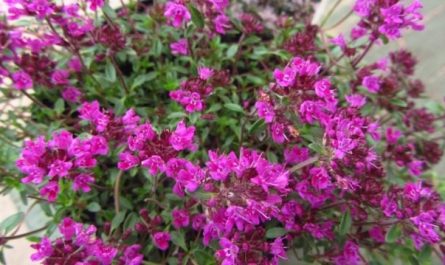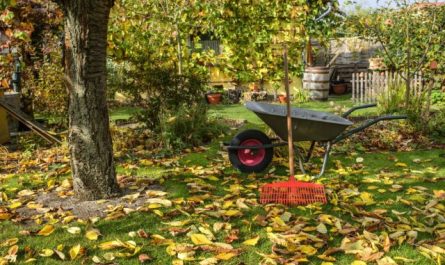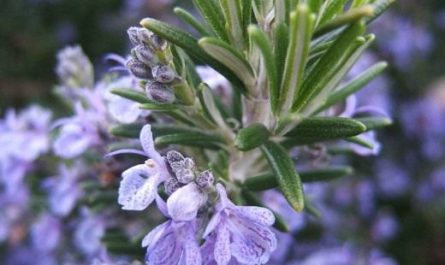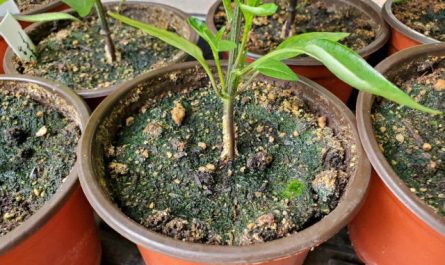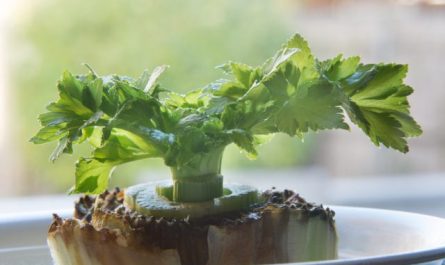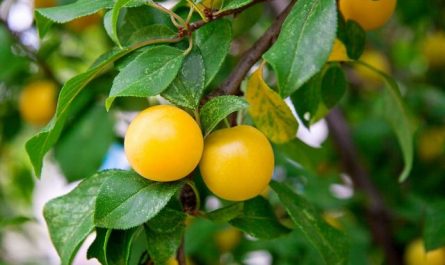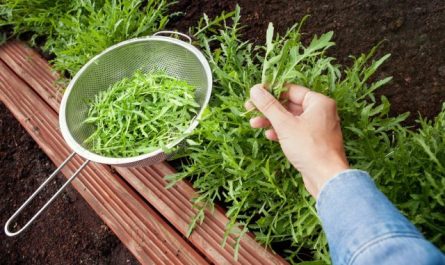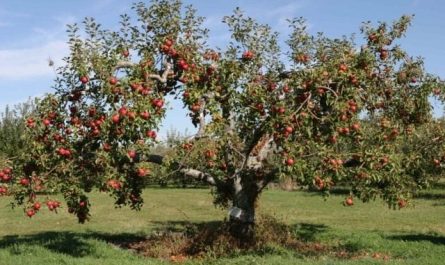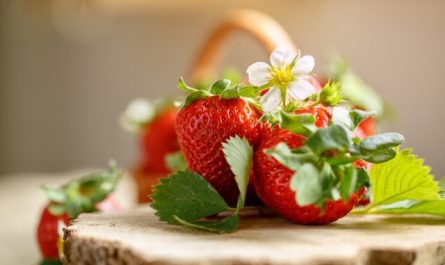To successfully grow grapes, a gardener must know the basic requirements of this plant for living conditions and, in accordance with this, determine a place for planting on his plot, select suitable varieties and organize proper care of the bushes. Let’s try to briefly formulate these requirements.
Grapes love warmth. Buds begin to open at 10-12°. Shoots grow most quickly at a temperature of 25-30°. During the flowering period, a temperature of 22-25° is favorable. The optimal temperature for ripening grapes is 25-30°. When the temperature drops to 15-16°, the berries ripen slowly, the accumulation of sugars decreases or stops. Temperatures above 40° with a lack of moisture inhibit growth and can cause burns of leaves and berries. Leaves damaged by burns dry out and fall off, and the berries turn brown, wrinkle and dry out.

© Stan Shebs
Not only high temperatures, but also low temperatures have a negative effect on grape bushes. Thus, early autumn frosts of minus 4-6° cause damage and death of the central buds of wintering buds. Winter frosts of 24-25° can harm most varieties that are not covered for the winter (with the exception of very frost- and winter-hardy varieties, these are mainly hybrids with Amur or American – Isabella – “blood”). When the soil temperature in the root zone drops to minus 5-7°, the roots freeze. Swollen grape buds in spring are damaged by frosts at minus 3-4°, young green shoots and leaves – at minus 1°, inflorescences – at minus 0,5°.
In areas where spring frosts are common, I advise gardeners not to rush to dry tie the bush to the trellis so that during the frost it is possible to cover the bushes, and after the frost to open and try to carefully tie up the vines with already blossomed buds. In areas where late spring frosts are common, there is no need to rush to green breakage, here I recommend giving preference to varieties that, when shoots from the main buds are damaged, bear fruit on replacement buds (Baklanovsky, Delight Muscat, Galbena Nou, Victoria, Timur, Elf, Kishmish Zaporozhsky, Crystal, Isabella varieties, etc.).
The description of varieties often includes such a concept as the sum of active temperatures (CAT). What is it? In viticulture, an average daily air temperature of 10° is called active, because this is the maximum temperature at which the growth processes of a grape plant are already visible. Therefore, CAT is the sum of all average daily air temperatures from 10° and above for the period from the beginning of the establishment of such a temperature until the ripening of the berries of the variety. Thus, CAT is nothing more than the sum of active temperatures required for a specific variety for its harvest to fully ripen. CAT is calculated for each locality; information about this is usually found in regional climate reference books.

© Takkk
Grapes love light. If there is not enough light, the leaves do not function properly, fruit buds do not form, yields are sharply reduced, and the bush’s resistance to disease deteriorates. Considering this, do not plant grape bushes between fruit trees; it is better to allocate areas well lit by sunlight throughout the day for vineyards, and use arched and wall culture. The best lighting conditions for a bush are achieved with appropriate planting density, placing bushes on a trellis, shaping, timely and careful tying of shoots, breaking off excess shoots, pinching out stepsons, and other agricultural practices. Grape bushes should be placed as follows: from trees there should be at least 6-7 m, to bushes – at least 2-3 m, to the walls of houses – 1-1,5 m. To green a veranda or balcony, it is enough to plant 1-2 bushes of vigorous varieties and lead them in a multi-arm fan formation, then they will green the yard and give a high yield of grapes.
Grapes are a relatively drought-resistant plant. Of course, grapes yield higher and better quality crops under conditions of optimal water supply. The need for moisture in the grape bush at different periods of development is not the same. Most of all, it needs watering during the period of active growth of green shoots and after flowering, when intensive growth of berries begins. Water, however, can be not only good for the grapes, but also harmful, especially when used thoughtlessly and untimely. If you water the grapes at the wrong time and in the wrong volume, this will lead to a decrease in the growth of the bush and a deterioration in the quality of fruiting. Excessive soil moisture during the flowering period is extremely harmful to pollination, causing flowers to fall off. Abundant watering during the ripening period leads to liquefaction of the pulp, a decrease in the sugar content of the berry juice, and most importantly – leads to cracking of the berries! Such grapes will immediately be chosen by sparrows, wasps and fungal diseases. As a result, you can lose from 50 to 100% of the harvest! Excessive soil moisture also stops the branching of roots, weakens the growth and development of shoots, and reduces the size of bunches and berries. Weak, drizzling rains contribute to the development of fungal diseases. Hail is simply a natural disaster for a vineyard, it breaks shoots, tears off leaves and destroys the harvest. If the bushes are damaged by hail, all affected shoots and other parts of the plant must be cut off to provoke the growth of new vines to obtain a harvest next year.

© Pedroserafin
Grapes are very flexible and can grow on soils where other fruit and berry or vegetable crops cannot survive (sand, rocky soil, etc.). The yield and quality of grapes, as well as the quality of juice, largely depend on the type of soil. This is not of fundamental importance for table varieties, but it is very important for technical (wine) varieties. However, it is wrong to think that the grape plant is not at all demanding of soils. Water and mineral substances dissolved in it enter the above-ground part through the root system from the soil, so the type of soil still has a strong effect on the growth of the bushes, the quality of the harvest, and the plant’s resistance to unfavorable environmental conditions. This should always be remembered, especially when reading descriptions of grape varieties. Most descriptions refer to varieties growing on the soils of a certain area. When these varieties are transferred to another soil and climate zone, changes may occur in the size characteristics of the bunches and berries, in the strength of the bush, in resistance to frost and disease. Light sandy loam soils are the most favorable for almost all grape varieties. If the soil on the site is heavy, then gravel (small crushed stone – “seed”, not boulders), sand, humus should be added to the planting hole. The worst thing is if the place intended for grapes has close groundwater with a high concentration of salts. In the case of planting a vineyard on such soils, it is simply necessary to make drainage to remove groundwater. Swampy areas are completely unsuitable for planting grapes.
Since summer cottages are usually small, grapes are most often planted near the walls of houses and other buildings. The walls of houses protect the plants from cold air, the grapes are less exposed to frost, vegetation in such conditions usually begins a few days earlier and ends a month later than in “field” conditions. All this allows you to significantly expand the range of grape varieties for growing it in northern latitudes and get a good harvest.
Now about the selection of varieties. You should not, tempted by advertising, buy new (untested) poorly studied varieties and hybrid forms of grapes, you should not buy planting material from random sellers. As a rule, these people do not grow grapes themselves, they “simply sell goods”. By buying planting material from such sellers, you risk wasting years and condemning yourself to unnecessary material costs. In the overwhelming majority of cases, after several years of waiting, it turns out that the variety does not meet either the gardener’s requirements or the seller’s assurances, and you will have to either uproot or re-graft the bush.

© Valentino Liberali
When choosing, preference should be given to proven varieties that are characterized by high and stable yields, good quality of berries and bunches in local conditions, and preferably increased resistance to diseases and winter hardiness. Modern grape selection and its achievements make it possible to select exactly the assortment that would meet your requirements in all respects. If you plan to grow grapes in an area where no one has done this before, then you need to focus on very early and early ripening varieties of interspecific origin, with a short growing season, with good ripening of the vine and mandatory shelter for the winter.
Keep in mind that varieties with a functionally female flower type should be planted next to a bisexual plant that blooms at the same time. It is desirable (but not essential) to place the bushes in groups depending on their ripening period.
Ideally, the rows of the vineyard should be located along the north-south line, determined by the compass (this is very important!), on a site open to direct sunlight throughout the day. But if this condition cannot be met, then partial shading of the plantings for no more than 3-4 hours is acceptable. It is better when the vine receives direct sunlight in the morning, and diffused light in the evening.

© Jon Lebkowsky
The heat supply and heat conservation of the vineyard should be given the most serious attention, especially where there is not enough heat. What can be recommended for this? Plant bushes near buildings or a fence. Make a solid fence 2 m high on the northern and (or) north-eastern side. This will reduce the cooling effect of the wind at a distance of 14-15 m from the fence. Plant bushes on ridges. The ridge warms up faster – and the grape bush gets more heat. Keep the soil under black fallow. In the spring, the soil under the bushes can be covered with transparent film. Under the transparent film, the soil, protected from the wind, warms up faster and more during the day, and all the heat remains in the vineyard. When the heat comes, remove the transparent film.
Paint the posts and wire of the trellis black, this also gives, albeit a small, increase in heat. Dig large stones into the vineyard. They will accumulate heat and give it to the bushes at night. Cover the space between the rows with a layer of crushed stone.
Arrange reflective screens on the north or west side, and scatter them on the soil. Water the plants with warm water.
Just keep in mind that in the north in spring the soils usually contain an excess amount of moisture, so you should worry about good drainage. Using such “little tricks” ultimately leads to an increase in the sum of active temperatures by 500 degrees or more during the growing season.

© BotBln
Materials used:
- A. Dmitriev, Volgograd.
- S. Krasokhina, PhD in Agricultural Sciences, All-Russian Research Institute of Viticulture and Winemaking, Rostov Region, Novocherkassk

